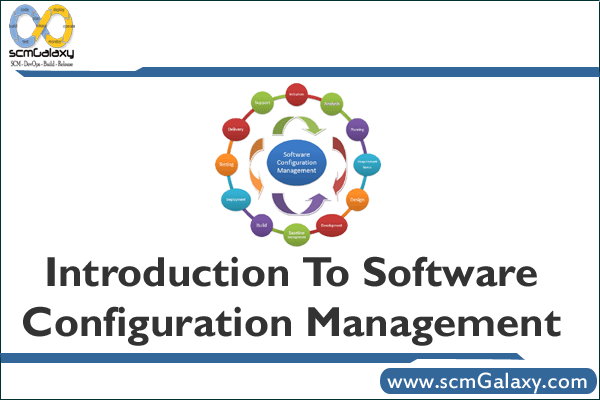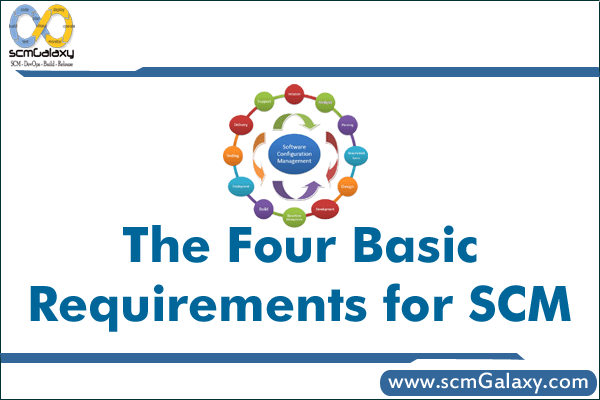Power Point PPT: Introduction To Software Configuration Management


Software engineers usually find coding to be the most satisfying aspect of their job. This is easy to understand because programming is a challenging, creative activity requiring extensive technical skills. It can mean getting to “play” with state-of-the-art tools, and it provides almost instant gratification in the form of immediate feedback. Programming is the development task that most readily comes to mind when the profession of software engineering is mentioned.
That said, seasoned engineers and project managers realize that programmers are part of a larger team. All of the integral tasks, such as quality assurance and verification and validation, are behind-the-scenes activities necessary to turn standalone software into a useful and usable commodity. Software configuration management (SCM) falls into this category—it can’t achieve star status, like the latest “killer app,” but it is essential to project success. The smart software project manager highly values the individuals and tools that provide this service.
This chapter will answer the following questions about software configuration management.
What Is Software Configuration Management?
Software configuration management (SCM) is the organization of the components of a software system so that they fit together in a working order, never out of synch with each other. Those who have studied the best way to manage the configuration of software parts have more elegant responses.
Roger Pressman says that SCM is a “set of activities designed to control change by identifying the work products that are likely to change, establishing relationships among them, defining mechanisms for managing different versions of these work products, controlling the changes imposed, and auditing and reporting on the changes made.”>
We think that Pressman’s description is a better description because we often view SCM as meaning software change management.
Wayne Babich describes SCM as “the art of identifying, organizing, and controlling modifications to the software being built by a programming team. It maximizes productivity by minimizing mistakes.”>
The Software Engineering Institute says that it is necessary to establish and maintain the integrity of the products of the software project throughout the software life cycle. Activities necessary to accomplish this include identifying configuration items/units, systematically controlling changes, and maintaining the integrity and the traceability of the configuration throughout the software life cycle.
Military standards view configuration as the functional and/or physical characteristics of hardware/software as set forth in technical documentation and archives in a product. In identifying the items that need to be configured, we must remember that all project artifacts are candidates—documents, graphical models, prototypes, code, and any internal or external deliverable that can undergo change. In SW PM terminology, a configuration item might be a proposal/estimate or bid, project plan, risk management plan, quality assurance plan, CM plan itself, test plan, system requirements specification, system design document, review metric, code, test result, tool (editors, compilers, CASE), and so on. There are basic objects and aggregate objects to be configured. The number of relationships among them reflects the complexity of the configuration task.
Why Is SCM Important?
Software project managers pay attention to the planning and execution of configuration management, an integral task, because it facilitates the ability to communicate status of documents and code as well as changes that have been made to them. High-quality released software has been tested and used, making it a reusable asset and saving development costs. Reused components aren’t free, though—they require integration into new products, a difficult task without knowing exactly what they are and where they are.
CM enhances the ability to provide maintenance support necessary once the software is deployed. If software didn’t change, maintenance wouldn’t exist. Of course, changes do occur. The National Institute of Standards and Technology (NIST) says that software will be changed to adapt, perfect, or correct it. Pressman points out that new business, new customer needs, reorganizations, and budgetary or scheduling constraints may lead to software revision.
CM works for the project and the organization in other ways as well. It helps to eliminate confusion, chaos, double maintenance, the shared data problem, and the simultaneous update problem, to name but a few issues to be discussed in this chapter.
Who Is Involved in SCM?
Virtually everyone on a software project is affected by SCM. From the framers of the project plan to the final tester, we rely on it to tell us how to find the object with the latest changes. During development, when iterations are informal and frequent, little needs to be known about a change except what it is, who did it, and where it is. In deployment and baselining, changes must be prioritized, and the impact of a change upon all customers must be considered. A change control board (CCB) is the governing body for modifications after implementation.
How Can Software Configuration Be Implemented in Your Organization?
We used to say, “Make a plan and stick with it—never waffle,” and “Requirements must be frozen—how else will we know what to code?” Now, we say, “Plans are living documents—they will be in a continual state of change as project knowledge increases.” We now know that requirements are never frozen—they merge, morph, and evolve and become expanded, enhanced, and extended. As long as artifacts of software development can undergo change, we will need some method of managing the change.
Because SCM is such a key tool in improving the quality of delivered products, understanding it and how to implement it in your organization and on your projects is a critical success factor. This chapter will review SCM plan templates and provide you with a composite SCM plan template for use in any of your projects. We will cover the issues and basics for a sound software project CM system, including these:

Identification, control, audit, and status accounting are the four basic requirements for a software configuration management system. These requirements must be satisfied regardless of the amount of automation within the SCM process. All four may be satisfied by an SCM tool, a tool set, or a combination of automated and manual procedures.